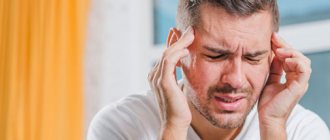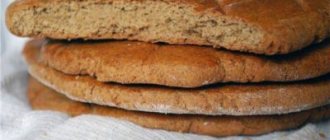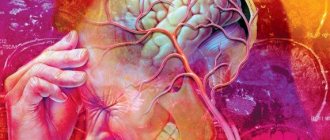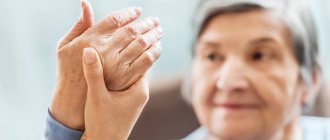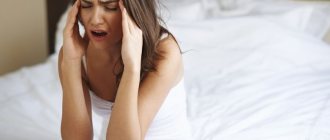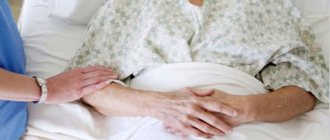general information
According to statistics, at least every tenth person on the planet suffers from migraine.
Women get sick approximately twice as often as men. This is associated with cyclical hormonal changes during the menstrual cycle. Typically, the disease makes itself felt before the age of 30-35; cases of the pathology occurring in childhood have also been described.
The biomechanism of the development of the disease is not precisely known. There are several theories about the occurrence of pain and accompanying symptoms, the most popular of which is neurovascular. According to this point of view, migraine begins against the background of activation of the trigeminal nucleus, which first causes spasm and then dilation of cerebral vessels. As a result, the tissue around the arteries becomes swollen, which leads to pain. In addition, the pathological process is associated with impaired serotonin metabolism.
Some scientists believe that pain occurs solely against the background of a sharp spasm and subsequent relaxation of blood vessels, resulting in tissue swelling (vascular theory). It has been clearly proven that the risk of developing the disease is significantly higher in women, as well as in people whose parents or close relatives also suffered from migraine.
Make an appointment
Causes
Migraine occurs against the background of various external and internal causes (triggers), each of which can cause another attack:
- mental and psycho-emotional stress;
- constant severe stress;
- sleep disturbances, insufficient rest at night;
- chronic fatigue (mental and physical);
- smoking;
- previous head injuries (even many years ago);
- excessive physical activity for a particular person;
- hormonal surges: puberty, menstruation (“menstrual migraine”), pregnancy;
- consumption of foods containing tyramine (chocolate, coffee, citrus fruits, nuts, cheese, smoked meats);
- drinking alcohol, especially low-alcohol drinks;
- sharp fluctuations in atmospheric pressure, changes in air temperature;
- overstrain of the senses: sharp sound, bright light, strong unpleasant odor, etc.;
- staying in a hot or stuffy room, etc.
Each person has his own “dangerous” factors. Most of them can be calculated and, if possible, avoided in the future.
Symptoms
A migraine attack follows a standard scenario, consisting of several successive stages.
- Prodromal (initial) stage. A person’s mood begins to change, yawning and drowsiness appear, or, conversely, insomnia. Some report sensitivity to noise and bright light. Sometimes there is a slight numbness in one of the hands. For most patients, these symptoms are enough to know that a full-blown migraine attack is on the way. The duration of the prodromal stage ranges from several hours to several days; it is not present in all patients.
- Aura. Occurs against the background of cerebral vascular spasms. Most often it manifests itself in the form of visual disturbances (flashes in the form of spots, zigzags or lightning in front of the eyes, distortion of the contours of objects, loss of individual fields of vision). Less common are taste or hearing disorders, problems with coordination of movements, etc. Aura is not observed in all patients.
- Actually a migraine attack. In most cases, it manifests itself as a unilateral headache that is pulsating in nature. It starts with slight discomfort and gradually gains strength, becoming simply unbearable. Movements, changes in body position, bright lights and loud sounds intensify the sensations, which is why patients try to spend this time lying in a darkened room. Against the background of a headache, many patients report nausea, vomiting, soreness in the muscles of the neck and shoulders, nasal congestion, lacrimation, chills and even fever. The duration of the attack is individual and ranges from 2-3 hours to several days.
- Resolution stage. At this time, the headache goes away on its own or after taking medications. Many patients fall asleep at first, but within 24 hours after the attack they may feel weak, lethargic, dizzy, and depressed. Increased sensitivity to light, sounds and smells also does not go away immediately. Less common is the opposite type of resolution stage, in which patients note increased activity.
Self-help measures for migraines
Migraine significantly reduces the quality of life, undermines family relationships, reduces social contacts, and depresses vitality. It is not surprising that according to statistics, depression is several times more common among migraine sufferers than among healthy people. An attack (if it has an aura) has four stages - prodromal, aura, pain and recovery. Is it possible to help yourself and stop the attack in time before the pain hits with all its intensity? Is it possible to get rid of it yourself without resorting to an ambulance? During a migraine attack, doctors recommend the same actions for many years - before taking medication, try to cope with the attack yourself. What needs to be done for this?
How to help yourself during a migraine attack if the patient is not at home?
If an attack begins at work, it is advisable to take time off to go home; you should not expect the pain to go away on its own. If you can’t ask for time off, you need to act quickly and competently; the sooner you take measures against migraine, the greater the opportunity to prevent an attack.
- drink hot sweet green or black tea with lemon;
- if you don’t have “your own” anti-migraine drug at hand, drink any drug from the group of non-steroidal anti-inflammatory drugs (preferably in effervescent form or in suppositories), then you can additionally take the drug Antimigraine or Rapimig; Another scheme is possible - drink no-shpa (2 tablets are possible), after 15-20 minutes drink sweet hot coffee;
- do not use the same drug if it does not help, and do not use a new drug for you at work (on the recommendation of colleagues);
- try to talk less and, if possible, go out into the fresh air;
- give yourself a hard massage of your temples and the back of your head;
- massage your fingers;
How to help yourself during a migraine attack at home?
One of these recommendations or a combination of several can stop the attack or significantly alleviate it:
- take a contrast shower;
- use diluted aromatic oils, the smell of which is not irritating (for example, peppermint), although Vietnamese balm “Star” with a pungent odor helps some;
- put mustard plaster on the back of the head;
- apply a hot foot bath;
- Place your hands in a container of cold water (you can add pieces of ice);
- take a hot communal bath;
- drink a cup of hot sweet tea;
- massage the neck and scalp, using pressure movements, massage the head from the temples to the back of the head, from the back of the head to the crown;
- go to a quiet room and lie horizontally;
- do not turn on the lights (if it’s daytime, close the curtains);
- try to sleep;
- if the above methods do not help, then you need to drink an analgesic, preferably in an “effervescent” form; if the attack is usually accompanied by nausea and vomiting, then you should take an antiemetic 20 minutes before taking the analgesic;
- use cooling wipes or contrast compresses on the head;
- if the attack does not go away after 2 hours, you can take a combined analgesic or triptan;
- if the headache worsens, inject baralgin;
When should you call an ambulance?
- speech and vision impairment persists throughout the attack;
- repeated vomiting and frequent loose stools appeared;
- the attack is prolonged - more than three days;
- severe visual impairment - up to blindness;
- disorientation in space, dizziness;
- addition of fever;
- the occurrence of paresis or paralysis;
- increased frequency of attacks over the course of a week
Conclusion
Don't underestimate migraine attacks. This is an independent disease that poisons the lives of many people. During an attack, a person cannot work, cannot do household chores, cannot communicate, cannot eat or sleep. After an attack, he needs time to recover and come to his senses - weakness and lethargy descend upon him. If migraine attacks occur, you must make an appointment with a doctor to be examined and receive recommendations and an individual treatment regimen. You need to keep a pain diary and minimize all provoking factors; you need to learn to recognize the warning signs of an attack in order to try to avoid it or relieve the pain. Self-help measures include distraction, taking a proven medication, and going to a quiet, dark, calm place.
Types of pathology
Migraines are most often classified according to the presence of an aura and its type. The following types of disease are distinguished:
- classic migraine: before an attack of pain, a typical aura occurs with visual, auditory, olfactory and other disturbances;
- migraine without aura: symptoms appear suddenly against a background of relative well-being; the rest of the clinical picture is characteristic of the disease.
Depending on the predominant symptoms, the following types of migraine are distinguished:
- ocular (ophthalmic): accompanied by classic visual impairments: glare, flickering, flare in certain areas of the visual field;
- retinal: the disease manifests itself as complete or partial loss of vision in one eye due to impaired blood circulation in the vessels of the retina;
- ophthalmoplegic: manifested by double vision, visual distortions, drooping of the eyelid;
- basilar: accompanied by dizziness, ringing in the ears, unsteadiness when walking, blurred speech;
- hemiplegic: characterized by loss of sensation and impairment of motor function of one arm or arm and leg on one side;
- cervical: occurs against the background of impaired blood flow in the vertebral arteries and is accompanied by a very severe headache;
- aphasic: pain is accompanied by speech disorders, as with a stroke;
- abdominal: additionally manifests itself as severe pain throughout the abdomen, diarrhea, nausea and vomiting; this form is very common in children;
- “decapitated”: the patient does not feel a headache, as a rule, only visual disturbances are noted, while the prodromal period and aura occur typically.
Migraine status stands apart. This is a severe condition in which two or more attacks occur in a row with less than 4 hours between them. This type also includes pain that lasts for more than 3 days. Against the background of migraine status, the patient experiences repeated vomiting, which does not allow him to eat, drink, or take medications normally.
Diet for migraines - nutritional therapy
Migraines are periodic attacks of severe headaches, the characteristic feature of which is localization in one half of the head.
Headache is a fairly common problem known to almost every person; statistics show that almost 90% of women and 70% of men experience headaches from time to time. According to surveys, for 20% of the world's population, headache becomes a problem that worsens the quality of life. Young women are more predisposed to developing the disease. Pathology has the ability to be inherited, especially if the mother suffered from the disease, then the child’s chances of getting sick are very high and amount to up to 70%. In adults, the disease is diagnosed much more often, but about 8% of children also suffer from this pathology.
Types of migraine
- Migraine with aura is the appearance of visual, taste, and olfactory disturbances some time before the attack. Migraine with aura occurs in every fourth patient.
- Migraine without aura - pain occurs suddenly, without any warning signs. The most common type of disease.
Factors provoking the disease
- Emotional stress
- Physical fatigue
- Weather changes
- Smoking
- Errors in nutrition
Diet for migraines
Treatment should be aimed primarily at eliminating the factors that provoke the disease. For most people, all treatment of the disease comes down to stopping attacks. At first glance, you wouldn’t think that poor diet and headaches can be related, but as has already become known, food is not the last factor influencing the occurrence of attacks. For more effective treatment, the specialist gives the patient a list of prohibited and recommended products.
A diet for migraines should be based on compliance with the following rules:
- You need to eat in small portions, and the number of meals can be up to five. There should not be a long gap between meals. Large gaps between meals can cause headache attacks either on their own or cause constipation, which in turn can also provoke attacks, no matter how strange it may sound.
- Avoid fasting. Already five hours after the last meal, the blood sugar level decreases, the blood vessels narrow, which is a provoking factor.
- It is necessary to monitor the body's reaction to each product; the effect of food on headaches is different for each person.
- Avoid overeating
A diet for migraines should exclude foods containing substances such as:
Tyramine is an organic substance that is strictly prohibited for migraines. Tyramine is found in many foods and its concentration in them can increase during long-term storage and heat treatment.
The diet for migraines should exclude foods containing tyramine due to the fact that it contributes to vasoconstriction and increased blood pressure. The highest concentration of the substance is in: chocolate, overripe fruits, some types of cheeses (brie, feta, mozzarella, parmesan). A certain amount of the substance is found in meat, legumes, nuts, wine, beer, kefir, and yogurt.
Serotonin is a hormone produced by the body as a result of eating certain foods.
Foods containing serotonin:
- Confectionery
- Cheese
- Beans and soybeans
- Oyster mushrooms
- Cottage cheese
- Buckwheat
- Oatmeal
- Tremble
- Prunes
- Dried apricots
- Sea kale
Nitrates are salts of nitric acid that have a detrimental effect on the body of adults and children. An incredible amount of them is contained in preservatives and dyes, so nitrates should be avoided if possible.
Histamine is a biologically active substance that can provoke allergic reactions. Histamine can cause severe attacks. Therefore, it is important for a person suffering from this pathology to know which products contribute to its active formation.
Foods with high histamine concentrations:
- Alcohol. If you are prone to headaches, alcohol should be avoided altogether. Alcohol contributes to disruption of the normal functioning of blood vessels.
- Cheese
- Smoked meats
- Pickled vegetables
Proper nutrition for migraines
Having learned about which foods can cause pain, it seems that all the delicious food is left behind, however, do not be upset, because a diet for migraines can be not only tasty, but also healthy if you just combine the permitted foods correctly.
The diet must include foods containing magnesium. After conducting many studies, scientists realized that a lack of magnesium in the body is one of the leading causes of migraines. Treatment with magnesium preparations also showed positive results.
Protein is one of the constant components of the migraine diet. Protein-rich foods must be eaten fresh; after daily storage, it is undesirable to consume them.
Products that should be present in the diet:
- Sea fish
- Vegetable oil
- Lean meats
- Low-fat dairy
- Vegetable stew
- Processed cheese
- Boiled eggs
Coffee and headaches
There has been controversy surrounding this drink for decades; many doctors include it in the list of prohibited drinks for various diseases, migraine being no exception. A considerable number of people claim that if you drink a cup of coffee you can not only reduce pain, but also completely prevent an attack of pain. It has been established that drinking this drink in reasonable doses actually alleviates pain. The dose of caffeine should not exceed 250 mg per day; in such quantities its consumption will only be beneficial. But it must be remembered that for people with high blood pressure, drinking even a small amount of coffee can be harmful.
None of the products can instantly stop headaches, but by adhering to proper nutrition during migraines, you can significantly reduce the intensity and frequency of their occurrence.
Diagnostics
The patient's headache has characteristic features that immediately suggest a migraine. For diagnosis, the doctor uses the following methods:
- collecting complaints and medical history to determine the nature of the pain; special attention is paid to: the time of onset and end of the attack;
- provoking factors;
- nature of pain;
- the absence or presence of an aura, its symptoms;
- well-being after an attack;
If necessary, additional examinations and consultations with specialists are prescribed. The diagnosis of migraine is made by exclusion when no other causes of headache have been identified.
Make an appointment
How to cope with migraines?
Women are more susceptible to the disease. Migraine is not life-threatening, but it causes a lot of trouble for the patient. A severe headache, often accompanied by nausea, vomiting and photophobia, unsettles a person and makes him unable to work.
The mechanisms of development of this type of headache are not fully understood, but effective treatment methods already exist. You should not give up and let the disease take its course. Migraines need to be treated!
Migraine is an independent disease and is not associated with damage to the nervous system. If, during the examination of patients, any pathological changes are revealed, it is quite possible that under the mask of migraine is hidden a life-threatening disease that requires emergency care.
Particular attention should be paid if the following symptoms are present:
- Headache occurs for the first time (especially in adolescents and the elderly). This could be a sign of a brain tumor
- Intense headache occurs suddenly. This happens when a blood vessel in the lining of the brain ruptures.
- Headache is combined with lethargy, drowsiness, blurred vision, poor understanding of speech, and weakness in the limbs. These symptoms may suggest a stroke
- A severe headache is accompanied by elevated body temperature. Here you must not miss a dangerous infectious disease - meningitis
If you have such symptoms, you should immediately consult a doctor. Our clinic address: St. Petersburg, st. Bolshaya Raznochinnaya, 27 metro station Chkalovskaya
The main factors that increase the risk of the disease are hereditary predisposition and fluctuations in the level of sex hormones in the body.
Migraine is characterized by the attachment of attacks to provoking influences - triggers. These may include high nervous stress, rest after difficult activities, poor diet, consumption of certain foods (cheese, chocolate, canned food, etc.), alcohol intake and many other factors. In women, attacks may be associated with the menstrual cycle.
In about half of migraine sufferers, warning signs appear 2-3 hours before an attack - irritability, decreased mood, decreased physical activity, increased appetite. One third of patients experience an aura (translated from Greek as “blowing”) 10–30 minutes before an attack. Flashes of light, sparkles, a shining crescent, and other figures appear before your eyes. Some patients experience a feeling of tingling or numbness in the skin of the face or arm. Some find it difficult to speak. The cause of the aura and warning signs is a violation of blood circulation in the brain.
Then an attack of one-sided headache begins. The pain is intense, often pulsating, and may be accompanied by nausea, vomiting, dizziness, sensitivity to light and sound, and increases with physical and emotional stress. An attack lasts from four to 72 hours (an attack longer than 72 hours is called “status migraine”). Then the headache goes away, but fatigue persists for some time. Until the next attack, the patient may forget about the migraine. But sooner or later the period of remission ends, and the disease makes itself felt again.
The diagnosis of migraine is made based on the results of a survey and examination of the patient. If the patient consults a doctor during an attack, then external signs such as redness or paleness of half the face may indicate a migraine. In the intervals between attacks, the symptoms of the disease do not appear, and the doctor has to be content with the patient’s anamnesis - his story about his suffering. Objective research methods that reliably confirm the presence of migraine do not exist today. Quite the contrary: if during the study a pathology is discovered that can cause a headache, this is evidence against migraine.
Let's move on to treatment issues. The causes of migraine have not yet been fully established, but there are a lot of people who want to treat this disease. Quite often there are advertisements from various manufacturers and healers about new miracle methods and miracle medicines. There is no need to give in to such admonitions! Only a neurologist can effectively treat migraine.
The specialists at the Neurology Department have many years of successful experience in treating migraines. At the first stage, measures are taken to relieve pain; further treatment is aimed at preventing attacks. The method of treating migraines with botulinum toxin has proven itself. Hardware methods are used (for example, interstitial electrical stimulation of VTES), as well as manual techniques, including the treatment of headaches with osteopathy.
Our clinic address: St. Petersburg, st. Bolshaya Raznochinnaya, 27 metro station Chkalovskaya
The effectiveness of treatment largely depends on the patient. It is important to follow these simple recommendations:
- Increasing physical activity, physical education
- An attempt to identify triggers (for example, certain foods) and means to prevent an attack (for example, exposing the head to cold water). Using the information obtained in everyday life
- When an attack approaches, take the prescribed drug immediately, since an attack may interfere with its absorption
- Trying to fall asleep to relieve pain
- Taking analgesics (especially combination drugs) no more than 2-3 times a week, otherwise the headache may become chronic
- Keeping a diary is recording in it all the moments associated with headaches and the use of medications. The information recorded in the diary will help the neurologist make a diagnosis and prescribe treatment.
In the fight against migraine it is very difficult to achieve complete victory. But controlling this disease, reducing the frequency and severity of attacks, and improving the patient’s quality of life is quite achievable. Don't put off visiting your doctor! Call!
Our clinic address: St. Petersburg, st. Bolshaya Raznochinnaya, 27 metro station Chkalovskaya
Treatment
Migraine treatment is divided into two areas:
- relief of the patient’s condition during an attack;
- preventing the occurrence of new attacks.
Help during a seizure
At the first signs of an impending migraine attack, it is necessary to eliminate as quickly as possible all factors that can increase the pain:
- turn off the lights and TV, close the curtains;
- eliminate sources of extraneous sounds as much as possible;
- provide access to fresh, cool air;
- go to bed.
To prevent and relieve immediate pain attacks, painkillers of various groups are used:
- analgesics and non-steroidal anti-inflammatory drugs (analgin, ibuprofen, indomethacin and their analogs): used for mild attacks that do not affect a person’s daily life;
- combination drugs (codeine, tempalgin, solpadeine): prescribed for moderate attacks that have little effect on life activity;
- triptan drugs (amigrenin, sumamigren, zomig and others) are used if attacks interfere with normal life;
- hormonal drugs (dexamethasone): used for severe and prolonged migraines in combination with other medications.
Additionally, antiemetics (metoclopramide, cerucal) can be used.
Home remedies to prevent a migraine attack are used as an addition to the main therapy. Many patients benefit from:
- cold compress on forehead;
- rubbing essential oils into the temple area;
- infusion of chamomile, mint, lemon balm, lavender and other herbs that promote relaxation;
- acupressure on acupuncture points: at the base of the skull, between the eyebrows in the hollow above the bridge of the nose, on the back of the foot (the hollow between the first and second toes).
It is important to remember that these remedies do not replace primary therapy.
Treatment between attacks
Preventing the occurrence of attacks is no less important than relieving pain and nausea. Currently, various groups of drugs are used:
- beta-blockers (propranolol and drugs based on it);
- antidepressants (venlafaxine, milnacipran, etc.): have a good effect in the treatment of chronic pain, and also reduce the manifestations of depression characteristic of patients with frequent attacks;
- anticonvulsants (Depakine, topiramate): well tolerated and significantly reduce the frequency of exacerbations.
Medicines are used:
- if exacerbations occur more than 2 times a month;
- if attacks last more than 48 hours;
- with severe headache or complications.
In other cases, general preventive measures are sufficient.
Evgeniya
“My migraines usually start with an aura. It can be different. In my case, it’s as if I’m inside a soap bubble, from which, firstly, it’s very hard to hear, and secondly, the world around me shimmers with all the colors of the rainbow. In addition, olfactory hallucinations begin, and very funny ones at that. For example, from the last one: while walking my dog in the forest, I smelled smoked sausage. From time to time I smell metal or alcohol - and this is definitely a sign of an impending migraine. I learned about this symptom from American migraine groups, which I read all the time: they discussed that olfactory hallucinations are very often a precursor to migraines.
I have several types of migraines: the most common are a reaction to changes in atmospheric pressure. In addition, there are hormonal and stress migraines. After undergoing long-term therapy, I learned to regulate stress quite well. The weather is absolutely not controlled in any way. True, I have low blood pressure, and from time to time I drink a lot of coffee, which sometimes manages to pull me out of an attack. But, unfortunately, at some point the migraine may start again - already because I drank too much coffee. That is, it’s difficult to understand: your head hurts because the atmospheric pressure is jumping again or because coffee is already flowing through your veins instead of blood.
Sometimes I get migraines without pain, just an aura. In such a situation, I can’t think, I can’t work, the general condition is very unpleasant, but I can tolerate it. And the most hellish pain is hormonal migraines. Here it comes to trips to the hospital. I noticed that with hormonal migraines I do not have enough oxygen, and the doctor prescribed it to me. I have an oxygen cylinder next to my bed, and I can periodically put on an oxygen mask (the heroine lives in Sweden, editor's note).
Of the non-drug ways to combat migraines, I use heat and cold. I have gel pads that I keep in the freezer. When an attack begins, family members carry them back and forth - in our house this is called “bringing cartridges.” In addition, I have a soft toy - a sheep with filling and lavender, which can be heated in the microwave. I also read this method on the forum. If a person can lie down, then it is better to lie down, but the legs should be slightly higher than the level of the head. I place the cold at the base of the skull and the hot sheep under my feet. And this often makes my condition easier.”
Prevention
Prevention of migraine attacks is not only properly selected drug therapy, but also correction of the patient’s lifestyle. Doctors recommend:
- normalize sleep: for the normal functioning of the body, at least 8 hours of night sleep every day are required;
- minimize the consumption of foods that can cause an attack, especially chocolate, spices, and alcoholic beverages;
- eliminate smoking;
- adhere to a balanced diet with a mandatory breakfast and intervals between meals of no more than 5 hours;
- observe the drinking regime and consume at least 1.5-2 liters of clean water per day; in hot weather this amount can reach 2.5-3 liters;
- establish a work and rest schedule, avoid mental and physical fatigue;
- reduce stress levels as much as possible;
- make a habit of light or moderate physical activity: swimming, walking, cycling, yoga, Pilates;
- promptly identify and treat chronic diseases, especially osteochondrosis of the cervical spine, atherosclerosis and other pathologies that contribute to the deterioration of blood flow in the brain.
Regular health resort treatment of a restorative nature and tourist trips without extreme changes in climate and time zones have a good effect.
What it is?
This is a kind of neurological disease that affects almost 15% of people of different ages. Much more often this disease affects women who are of working age .
Men, in turn, suffer from this disease less often due to their hormonal mood in the body (more details about migraine in men and methods of its treatment can be found here). In most cases, people suffering from migraines do not come to the hospital with their problem, but try to get rid of it on their own.
IMPORTANT! Migraines can occur at any age. This is not an age-related disease, so all groups of people fall into the category.
Factors provoking the disease
This disease can be caused by a number of factors.:
Constant stress.- Hormonal imbalances in the body.
- Severe fatigue.
- Circulatory disorders in the brain.
- Premenstrual syndrome can also cause migraine attacks.
- Excessive alcohol consumption.
- Abuse of smoked meats and chocolate due to the excess they contain tyramine.
All these factors can provoke an exacerbation of the disease.
Signs in adults
Increased headache may be only one of the signs of this disease, but depending on the degree of development of the disease, the disease may be accompanied by a number of other distinctive signs.
REFERENCE! In the vast majority of cases, people experience migraine without aura.
Aura is a whole complex of neurological disorders. It often appears before the onset of an acute attack or may be accompanied by a headache.
Often the aura lasts from five minutes to one hour, but in some exceptions such a symptom can persist for several days, which, of course, has a detrimental effect on the emotional state of any person.
The main signs of migraine are the following::
- Initially, the disease is accompanied by fluctuations in appetite and increased thirst.
- The person then becomes irritable and restless, and in some cases begins to experience severe drowsiness and fatigue.
- After the first signs comes the aura. It may be accompanied by pain or only cause it.
- The migraine itself can last from several hours to several days. In this case, pain gradually arises in the temporal, frontal and occipital parts. There are cases where the pain alternates with a gradual increase in one part of the head.
- The resolution phase occurs when the attack resolves with the help of medication or disappears on its own.
- During the final phase of recovery, the patient experiences increased appetite and excessive urination.
ADVICE! At the first symptoms of this disease, you should definitely seek help from a doctor. He will conduct an examination and prescribe a course of treatment (you can find out more about which doctor treats migraines here).
You can find out whether the feeling of scalp pain when touched is another sign of migraine or not by clicking here.
Treatment at the Energy of Health clinic
Neurologists at the Health Energy clinic are ready to help with migraines of any severity. We offer each patient:
- individual selection of drugs for the relief and prevention of attacks;
- training in relaxation and self-help techniques;
- sessions of restorative massage and physical therapy in the absence of contraindications.
Treatment is selected according to the individual characteristics of the body. Before prescribing a specific regimen, a complete examination of the patient is carried out to exclude other causes of headache.
Infusions for treatment
The most effective tools in treatment are decoctions and infusions of herbs.
Green tea
The drink is recommended at the first signs of a migraine.
Its amazing properties to relieve headaches are due to the high content of such beneficial substances in the tea leaf as tannin, polyphenols, amino acids, etc. Due to this, tea has a positive effect on the nervous system, relieves fatigue and stress. Preparation :
- Pour a glass of boiling water over green tea leaves (1-2 teaspoons).
- Let the product sit for 5 minutes.
Application: take in the morning on an empty stomach (preferably daily) in small sips of 200 ml. In some cases, one cup of tea (when an attack begins) is enough to eliminate pain.
Attention! Green tea should be consumed with caution in patients suffering from hypotension as it lowers blood pressure.
Clover
The product contains minerals and tannins, carotene, flavonoids, essential and fatty oils, due to which it copes well with headaches, reduces blood and intracranial pressure, and strengthens blood vessels. However, there are contraindications :
- varicose veins and thrombophlebitis;
- suffered a stroke or heart attack;
- pregnancy;
- diarrhea.
Preparation:
- Pour dried clover flowers (20 pieces) into a liter of boiling water.
- Let it brew for a quarter of an hour.
Application: drink 2-3 cups a day for a month.
From oregano herb
Oregano contains a lot of useful substances (coumarins, thymol, essential oils, flavonoids), which together contribute to a quick effect to get rid of headache attacks. Also, an infusion of oregano herb strengthens the nervous system and eliminates depressive disorders, which are often the causes of migraines.
The drug is contraindicated in:
- pregnancy;
- stomach ulcer;
- hypertension.
Preparation:
- Pour a tablespoon of herb into 300 ml of boiling water.
- Place the product in a warm place.
- After an hour, strain.
Application: take one glass several times a day.
Advantages of the clinic
Medical facilities are equipped in accordance with modern standards of diagnosis and treatment of diseases. We try to make every patient feel comfortable within the walls of the clinic and offer:
- consultations with doctors of various specialties;
- informative methods of instrumental, functional and laboratory diagnostics;
- individual selection of treatment regimen;
- complex effect on the body using not only drugs, but also additional methods: physiotherapy, massage, exercise therapy, manual therapy, etc.
Reception is by appointment, without queues or long waits. The location of the centers allows both motorists and those traveling by public transport to reach us comfortably.
If migraine attacks are making your life miserable, do not endure the pain. Contact the neurologists at Health Energy. Together we will find a way to relieve you of this disease.
